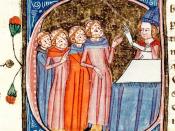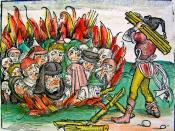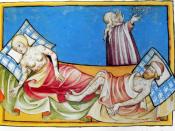The Black Death: How It Affected the WorldThroughout the entirety of history, there have been a multitude of human disasters that have had astounding effects on the world. These disasters have included famine, hurricanes, volcanic eruptions, floods, earthquakes, and armed conflict. Yet in the midst of the calamitous 14th century, Europe was struck by what is now thought of as the worst human crisis in its history: the Black Death (Konstam 118). Scholars believe that the Black Death was one of the major turning points that brought Europe out of the Middle Ages and into modern times (Gottfried xiv). The Black Death, also called "the pestilence" by contemporary writers, was thought to have consisted three strains: the bubonic plague, a disease that was spread to humans from rats by parasitic fleas, the pneumonic plague, and the septicaemic plague (Jordan 295-296). The three strains almost always resulted in death, with the pneumonic plague affecting the lungs, the septicaemic plague being a form of blood poisoning, and symptoms of the most common bubonic plague including a general "sick" feeling, internal bleeding, and the formation of buboes, or black, grotesque-looking swellings on the body.
The black-colored buboes, along with the dark, depressed feeling in European society that was present during the time of the Plague, gave the Black Death its name (Jordan 296). The Black Death originated in Asia and was brought to Europe by sailors who arrived in Sicily, from Kaffa (on the Black Sea), in 1347; the most major outbreak of the disease occurred between 1347 and 1353, though other outbreaks occurred after that time (Konstam 118). Once in Sicily, the airborne epidemic spread around Europe, and within a few years it had killed 20 million people, or approximately 1/3 of the Western European population (Cantor 7). Being a...



Well Done!
Excellent, informative essay. I myself wrote one on the Black Death, andI consider this one it's equal.
0 out of 0 people found this comment useful.